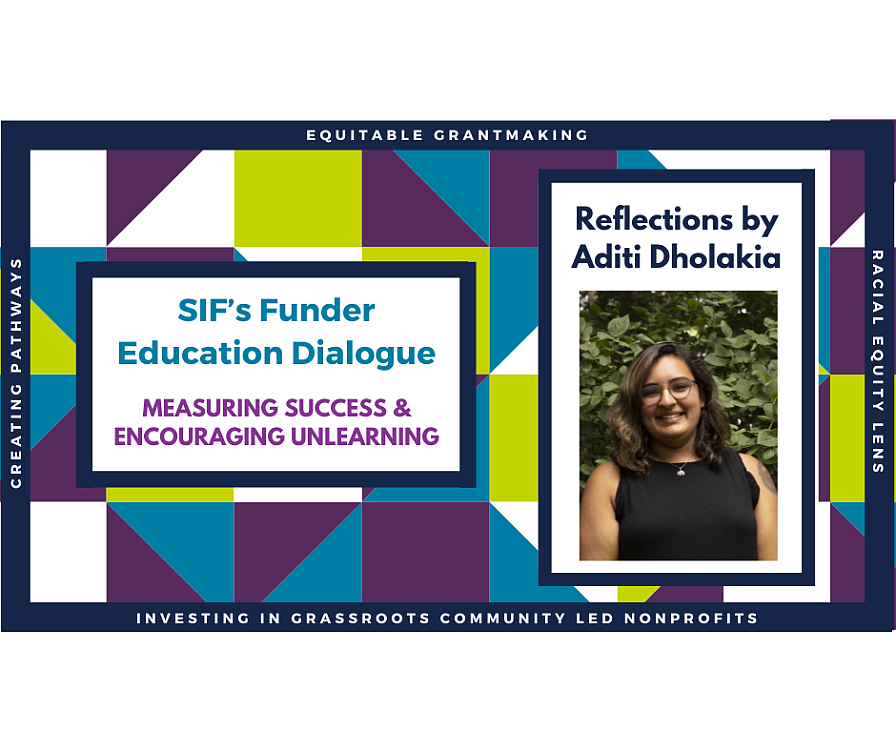
As more folks in the philanthropic sector recognize the inherent inequities in our resource allocation practices, and thus call for sweeping changes in traditional philanthropy, it becomes more apparent that before we as a sector can learn and implement change, we must take a step back and unlearn some (or many) of our harmful practices.
You’ve likely heard of the phrase, “out with the old, in with the new.” That is, in order to create space for new learnings, we must first untangle, unlearn and let go of “old” practices and norms. On Thursday, January 20th, the Social Innovation Forum embraced this energy in the first installment of “Learning to Unlearn: A Funder Education Dialogue Series” as part of SIF’s Funder Education programming.
The theme for our first dialogue was to identify, challenge, and unlearn assumptions and mindset barriers that funders and funder-adjacent organizations may have about measurement and evaluation. For example, many of us often operate with the following assumptions: 1) quantitative data is more important and informative than qualitative data; 2) that change can be measured in increments of 12 months or less; 3) that nonprofits must prove and improve their impact from year to year in order to be considered worthy of support.
During the past few months, SIF’s Funder Education programming has covered a range of topics, from equitable resource allocation, to participatory funding practices, and more. A common theme that has emerged is how to better understand and apply quantitative and qualitative measurement and evaluation practices in philanthropy.
It’s important to note that measuring success, impact, outputs and outcomes can be beneficial to growing a nonprofit’s reach in their community. Moreover, quantitative and qualitative data can provide valuable insight into how best to direct resources, what needs are emerging or unaddressed, and even how nonprofit staff and volunteers can best allocate their time and capacity. The key is to shift our focus toward nonprofit growth and resilience, and step away from what some perceive to be funder risk management.
In conversation with a group of funders who engaged with a willingness to question and challenge existing philanthropic practices at our first “Learning to Unlearn” Dialogue, we recognized that in order to shift the way we use measurement, it is imperative that we not only unlearn some of the potentially harmful practices that are embedded in traditional philanthropy, but that we also excavate at the roots of measurement and evaluation as a whole.
During the session, we posed the following questions:
What is the underlying purpose of measurement and evaluation?
Who benefits most from the current standards for evaluation and measurement? To what extent are nonprofits centered, if at all?
Who is advocating for the needs of the community, and who is determining how best to allocate resources to address those needs?
After one and a half hours of rich, vibrant dialogue, it’s entirely likely that folks left the conversation with more questions than answers. In fact, we’re hopeful that this was the outcome — that funders could see the opportunities for challenging existing ideals and that unlearning personally or culturally habitual practices in philanthropy is not an overnight process.
The goal is to ask more of these questions, embrace discomfort, and seek support and accountability from peers as we move toward determining what alternatives exist to the status quo. One thing remains true as the undercurrent and core to all of this work: it is relational. Building relationships and fostering connection is at the heart of SIF’s work, and integral to lasting, meaningful change in our social change sector.
Join us on Thursday, March 10th from 10:00-11:30am for the second installment of this dialogue series, as we approach this issue with a more solutions-based mindset.
 Social Innovation Forum
Social Innovation Forum